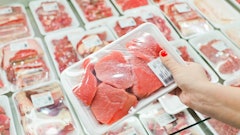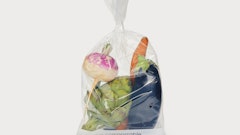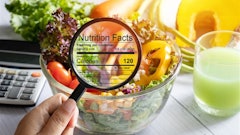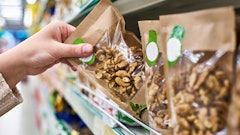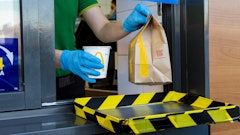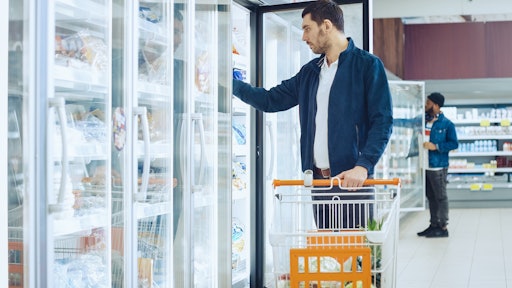
According to the International Food Information Council’s 2021 Food and Health Survey, American consumers have been developing healthier attitudes when it comes to their diets. As a nutritious and more stable-priced item, chicken is positioned for growth better than many other proteins. Still, it is important for chicken brands and packagers to ensure that consumers have a positive experience, so they are more prone to make a repeat purchase.
A WestRock survey found that consumers expect food packaging to keep their products fresh and safe while being functional and eco-friendly. Although every industry and product differ in their packaging needs, raw chicken products need to be stored safely in packaging that will keep them separate from ready-to-eat foods. Additionally, consumers want their chicken products to maintain the same quality from the first use to the last. Advancements in reclosable flexible packaging technologies can offer brands the benefit of reduced waste, increased product protection and a better consumer experience.
Maintain product freshness and reduce waste
Whether fresh or frozen, the right packaging substrates paired with the proper closure can help extend the shelf life of chicken products. Oftentimes consumers prefer to use food products over the course of multiple servings, especially when purchasing frozen or in bulk, so it is essential that buyers feel confident their products will maintain quality until the next use. Reclosable flexible packaging is ideal because it can provide a strong barrier against moisture and oxygen even after the package has been opened and reclosed.
Reclosability is also beneficial for prolonged storage in the freezer. When consumers purchase frozen foods, there is trust that it won’t spoil as quickly as fresh. Unfortunately, this is not always the case. Regardless of the expiration date, freezer burn and a lack of confidence in a package’s resealability can cause consumers to toss their chicken products, resulting in waste that could otherwise be prevented. The Boston Consulting Group currently estimates that by 2030, annual food loss and waste will hit $1.5 trillion. To help reduce food waste and better the consumer’s experience from beginning to end, packagers can adopt reclosable flexible packaging solutions. The right closure can not only help prevent freezer burn and maintain freshness but pairing your closure with an easy-open tear bead design in lieu of perforation ensures the packaging is hermetically sealed. Consumers will also appreciate knowing that their package hasn’t been tampered with prior to purchase when your packaging is complete with a tamper-evident hood.
Lessen the risk of cross-contamination
In addition to a desire for retained freshness, consumers rightfully have an expectation that they won’t have to deal with a potentially dangerous mess inside their refrigerator or freezer. Quality closures can not only help preserve the quality of raw chicken but curtail potential leakage. Chicken can be a nutritious choice of protein, which is why it is preferred in many households, but raw chicken can be contaminated with pathogens that can lead to foodborne illness. When considering the risk of cross-contamination from raw chicken to ready-to-eat foods, proper closures give consumers a sense of security. If the packaging is not reclosable, consumers may attempt to secure the package themselves or completely repackage the product. This solution can lead to the loss of vital information like cooking instructions and brand information. When consumers feel secure in the safety and quality of their product, they are more likely to stay loyal to your brand’s products.
Embrace sustainability
As consumers become more conscious of waste and the havoc it wreaks on the planet, there is greater demand for sustainable solutions. WestRock’s survey confirmed that 82% of consumers found it important for brands to balance safety and concern for the environment when designing their packaging. Reclosable flexible packaging not only helps cut down on food waste but also offers sustainability benefits throughout the package’s lifecycle.
When it comes to weight, reclosable flexible packaging is often lighter than the rigid alternatives. Rigid packaging options tend to use more and often denser material and take up more space. Whereas reclosable flexible packages can lay flat, contouring to the product, making them ideal for shipping and help in reducing a brand’s carbon footprint. Additionally, compatible combinations between sustainable films and sustainable closures are now possible. When films and closures are compatible, brands can not only maintain product quality, but help drive a circular economy where consumers can recycle or compost their mono-material pouches with less confusion of what parts of the package should and should not enter the waste stream. Closures that are blended for compatibility with a wide range of PE recyclable films can deliver on your sustainability scorecard in this way where recovery chains are available. In some cases, PE closures can also increase production efficiencies.
With a smaller carbon footprint and recyclable or compostable compatibility between films and closures, reclosable flexible packaging can keep brands in favor of environmentally concerned consumers. Despite how great the product is on its own, packaging for poultry products can play a sizable role in the consumer experience. When brands embrace reclosable flexible packaging, they make the choice to provide their consumers with an added-value experience.











